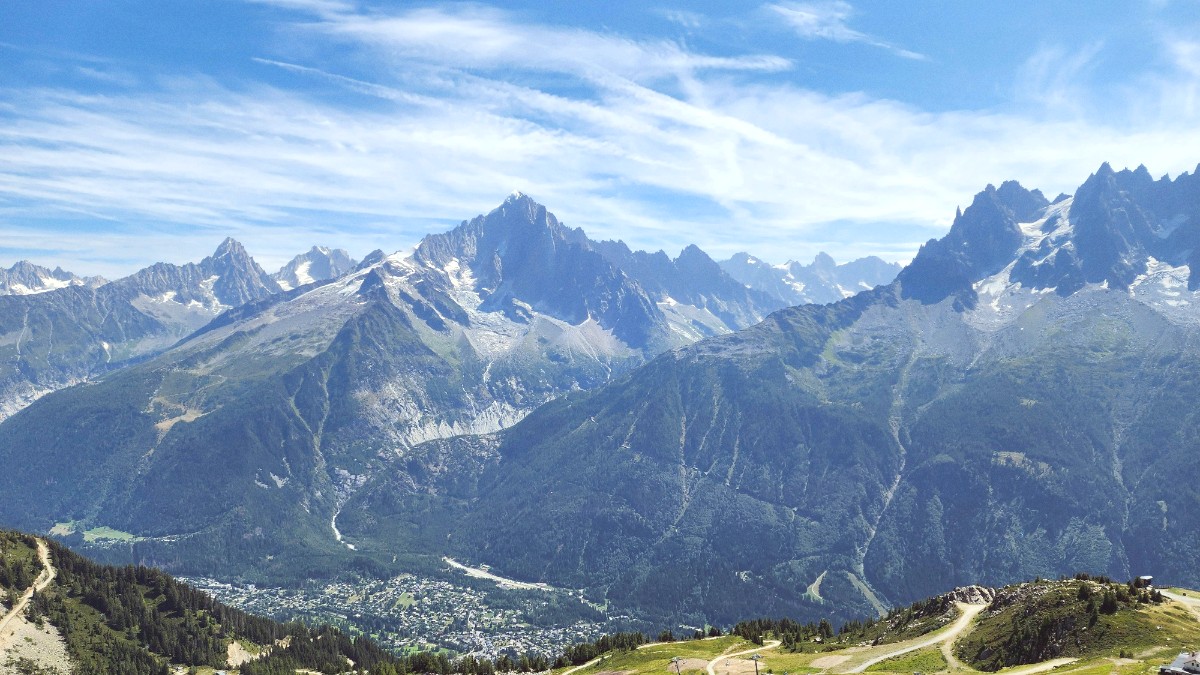
The French Alps, France
France is part of the Schengen Area, simplifying travel for many nationalities.
Citizens from many countries do not require a visa for short stays (up to 90 days within any 180-day period) for tourism or business. This includes citizens of the United States, Canada, United Kingdom, Australia, New Zealand, Japan, South Korea, and most South American countries. Beginning mid-2025, travelers from visa-exempt countries will need an ETIAS (European Travel Information and Authorisation System) authorization. This electronic travel authorization is similar to systems used by the US (ESTA) or Canada (eTA). Apply online before your trip. Citizens of countries not on the visa-exempt list must apply for a Schengen visa (a short-stay C visa). Submit your application at a French embassy or consulate in your home country well in advance. Requirements vary by nationality but commonly include proof of travel purpose, accommodation bookings, sufficient financial means, and travel insurance. For stays exceeding 90 days, a long-stay visa (D visa) is needed. This applies to students, workers, or those planning extended visits. The application process for a long-stay visa is more involved. VisaHQ offers direct visa and passport services.
France does not charge general entry fees for tourists. Immigration procedures at airports and land borders are standard Schengen border controls. Officers may ask about your travel purpose, duration of stay, and proof of funds or onward travel.
For general tourism in Chamonix, no special permits are needed. However, specific mountaineering objectives may call for permits or adherence to regulations. For instance, some popular routes on Mont Blanc may have permit requirements during peak season to manage traffic or ensure safety. Hiring a qualified mountain guide for technical activities is always a sound practice, as they can assist with any necessary permits and safety protocols.
Mid-Dec to March
Optimal snow conditions for skiing/snowboarding. Resorts and lifts operate fully.
Accommodation, lift passes, and activities are at their highest prices. Crowds on slopes, needing advance booking for everything.
May-June, Sept-Mid-Oct
Lower prices, fewer crowds. Lower hiking trails open in spring, pleasant weather in early autumn.
Weather variable. Some mountain lifts may be closed. Shorter daylight hours in autumn.
Mid-July to Mid-Aug
Ideal weather for hiking, climbing. All mountain lifts open. Many cultural events.
Peak crowds, higher prices. Popular trails and lifts busy. Afternoon thunderstorms common.
This occurs in late April - early May & late October - early December.
Very low prices and minimal crowds, giving a chance to see the valley in transition. However, many businesses, lifts, and restaurants close for a break. Activity options are limited. Weather can be unpredictable, with rain in spring and early snow in late autumn.
Avalanches pose a risk in uncontrolled, off-piste areas. Always check local conditions and respect warnings. White-out conditions can develop quickly at high altitudes.
Afternoon thunderstorms develop rapidly. These bring lightning, heavy rain, and sudden temperature drops. Hail is also possible. Plan to be off exposed ridges by early afternoon.
Altitude sickness can present symptoms like headaches, nausea, and fatigue at higher elevations, like the Aiguille du Midi (3,842m). Acclimatize gradually and stay hydrated.
Glaciers have hidden crevasses, a serious danger. Never walk on glaciers without proper equipment (crampons, rope, ice axe) and a qualified mountain guide.
Chamonix is generally a safe destination, but its mountainous environment presents unique considerations.
Be aware of potential health issues related to the alpine environment and take preventive steps.
Chamonix has local medical facilities for minor issues. For serious emergencies, transfer to regional hospitals happens.
Keep these numbers readily available for emergencies.
Chamonix offers experiences for every budget, from cost-conscious travelers to those seeking luxury. Costs vary significantly based on your travel style and the season you visit. This table below details estimated daily expenses per person.
| Travel Style | Accommodation (per night) | Food (daily) | Transportation (local, daily) | Activities/Attractions (daily) | Estimated Daily Cost |
|---|---|---|---|---|---|
| Budget Traveler | Hostel dorm bed (€30-€60) | Supermarket/Picnics, cheap eats (€20-€40) | Free local bus (guest card), walking (€0-€5) | Free hiking, window shopping (€0-€20) | €70 - €120 |
| Mid-Range Traveler | 2-3 star hotel / Private apt. (€100-€250) | Casual restaurants, some nice meals (€40-€80) | Local bus, occasional taxi, some lifts (€10-€40) | Aiguille du Midi, Mer de Glace, some guided hikes (€40-€80) | €120 - €250 |
| Luxury Traveler | 4-5 star hotel / Premium chalet (€300+) | Fine dining, gourmet experiences (€80-€200+) | Taxis, private transfers, rental car (€30-€100+) | Private guides, heli-skiing, spa treatments (€100-€500+) | €250+ |
Chamonix offers experiences for every budget, from cost-conscious travelers to those seeking luxury. This guide highlights options for all travel styles.
Receive a guest card from your accommodation for free local bus and train travel, plus attraction discounts.
Purchase multi-day passes for lifts for significant savings compared to single tickets.
Shop at local supermarkets and enjoy outdoor picnics for cost savings on meals.
Explore free activities like hiking and town exploration to enjoy the views without spending money.
Traveling during the shoulder seasons (May, June, September, October) often results in lower accommodation prices and fewer crowds.
For skiing or climbing, renting equipment in Chamonix can be more cost-effective than bringing your own, especially if you do not participate frequently.
Check local rental shops for a range of options.
2-3 star hotel or private apartment, from €100-€250 per night.
Casual restaurants and some nice meals, €40-€80 daily.
Local bus, occasional taxi, some lifts, €10-€40 daily.
Be aware of these potential additional expenses during your trip.
Maximize your savings as a budget traveler with these practical tips.
Opt for hostel dorm beds (€30-€60) to keep accommodation costs minimal.
Buy food from supermarkets for self-catering or picnics, budgeting €20-€40 daily for meals.
Utilize the free local bus with your guest card and explore on foot.